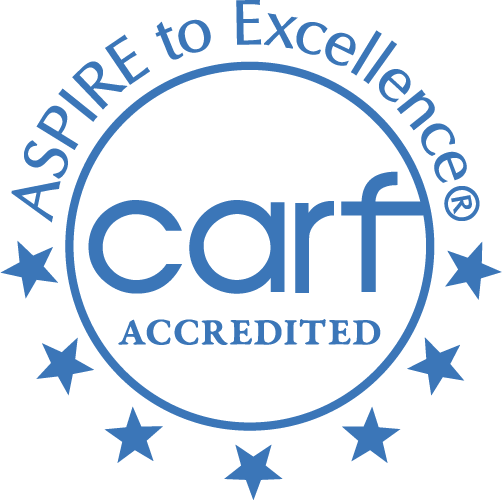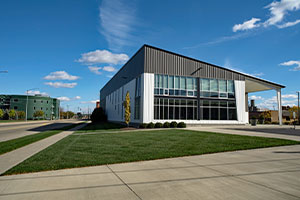Skip To Rehab Listing
Even so, for individuals struggling with drug and alcohol abuse problems, Barre can also offer resources in the form of 25 addiction treatment centers intended to support patients in their recoveries.
Drug and Alcohol Treatment Methods and Settings
Barre area residents who struggle with addiction have many rehab settings available to them, such as the following: short term addiction treatment programs, outpatient individual counseling, inpatient addiction treatment centers, long term addiction treatment programs, detox programs.
These treatment centers make addiction treatment easy to access, with convenient locations and numerous different rehabilitation approaches from which to choose, such as those listed here: substance abuse counseling approach, activity therapy, trauma therapy, 12-step facilitation approach, vocational rehabilitation services, cognitive/behavior therapy.
Special Programs for Alcohol and Drug Recovery
Addiction affects every person differently. In order to accommodate these differences and provide more customized treatment, alcohol and drug rehab programs in Barre provide a number of special programs for clients such as: substance abuse education, transgender or (LGBT) clients, treatment for spanish-speaking clients, persons with post-traumatic stress disorder, clients with HIV/AIDS, self-help groups.
Clients who feel they may benefit from these special programs can discuss them with the rehab facility to get support that is meant to increase the likelihood of sustained sobriety.
Treatment Payment Alternatives
Residents of Barre come from differing economic situations, making it vital for treatment centers to deliver several payment alternatives that place treatment within financial reach. Patients can expect to get payment options at close by drug and alcohol rehab facilities such as the following: private medical insurance, cash or self-payment, payment assistance, sliding fee scale, state education funds, county or local government funds.
Regardless of a patient's economic situation, money should not be a barrier to rehab. Drug and alcohol rehab programs guide individuals through their payment alternatives and help them pinpoint a way to pay for their treatment.
The goal of varied rehab centers, methods, programs, and payment options is that treatment for alcohol and drug abuse is accessible for as many people who need it.
Commonly Asked Questions about Addiction and Treatment
How can I help a loved one with their addiction to drugs?
Helping a loved one who's struggling with drug addiction can be a complex task that requires compassion, patience, and understanding. Here are several steps you can take:
- Educate Yourself: Learn about addiction and the specific substance(s) your loved one is using. Understanding the nature of addiction, its effects on the brain and behavior, and the process of recovery can make you a more effective source of support.
- Communicate: Open a dialogue with your loved one about their addiction. Make sure to approach them with empathy, expressing your concerns without judgment or blame. Use "I" statements to convey how their behavior is affecting you and others.
- Encourage Treatment: Encourage your loved one to seek professional help. This could involve a variety of treatments, such as detoxification, therapy (individual or group), medications, or residential treatment programs. Each person's pathway to recovery will be unique, so it's important to explore different options to find what may work best for them.
- Support, Don't Enable: There's a fine line between supporting a loved one and enabling their drug use. It's important to assist them in their recovery process, but refrain from protecting them from the negative consequences of their addiction. This might involve setting boundaries for their behavior.
- Take Care of Yourself: Supporting a loved one through addiction can be emotionally challenging. Be sure to take care of your own physical and mental health as well. Seek support from others, such as friends, family, or support groups like Al-Anon or Nar-Anon, which are specifically designed for those affected by a loved one's substance use.
- Stay Patient: Recovery is a long-term process that often involves setbacks. Patience, perseverance, and hope are key during this journey. Celebrate small victories and remember that progress may be slow, but it is still progress.
- Involve Professionals: If your loved one is resistant to seeking help, consider a professionally facilitated intervention. An interventionist can guide you and your family through the process of conveying your concerns and the need for treatment in a structured setting.
How can a homeless person get help for substance abuse?
For homeless individuals struggling with substance abuse, accessing help can be particularly challenging due to factors such as limited resources, absence of stable housing, and potential co-occurring mental health disorders. However, there are a number of avenues that a homeless person can explore to get help:
Government Programs: Many cities have government-funded programs that provide services for homeless individuals, including substance abuse treatment. These may include detoxification, outpatient counseling, residential treatment, and medication-assisted treatment. The U.S. Department of Housing and Urban Development (HUD) and the Substance Abuse and Mental Health Services Administration (SAMHSA) are two significant sources of such assistance.
Community Health Clinics: Community health clinics often offer a range of services, including substance abuse treatment, on a sliding scale based on income. These clinics also frequently provide referrals to other necessary services.
Nonprofit Organizations: Many nonprofit organizations offer resources and support for homeless individuals struggling with substance abuse. These may include recovery support groups, transitional housing, job training programs, and other services.
Outreach Programs: Outreach programs are designed to connect with individuals who may not seek help on their own. Outreach workers may go to places where homeless individuals congregate to provide resources and assistance.
Housing First Programs: These programs, which prioritize providing individuals with stable housing without requiring sobriety or participation in treatment first, have been shown to be effective in helping people maintain recovery and improve their quality of life.
Emergency Departments and Hospitals: In a crisis, emergency medical personnel can provide immediate assistance and connect individuals with longer-term substance abuse treatment resources.
Veterans Services: If the individual is a veteran, the U.S. Department of Veterans Affairs offers many services, including substance abuse treatment, mental health services, and housing assistance.
Suicide risks from drug abuse among lgbtq+ youth
Substance abuse significantly increases the risk of suicide, particularly among vulnerable populations such as LGBTQ+ (lesbian, gay, bisexual, transgender, queer, and others) youth. This heightened risk stems from a combination of factors associated with both substance abuse and the unique challenges faced by LGBTQ+ youth. Here's a closer look at these factors:
Mental Health Disorders: Substance abuse often co-occurs with mental health disorders such as depression, anxiety, and bipolar disorder, which are known risk factors for suicide. LGBTQ+ youth experience these mental health conditions at higher rates than their heterosexual and cisgender peers, partially due to the minority stress they face.
Minority Stress: Minority stress refers to the chronic stress experienced by marginalized groups, including LGBTQ+ individuals. It can include experiences such as discrimination, stigma, bullying, and family rejection, which can increase feelings of hopelessness and contribute to both substance use and suicidal ideation.
Substance Use and Suicidal Behavior: Substance use can lead to increased impulsivity, decreased inhibition, and intensified feelings of despair, making a person more likely to attempt suicide. It can also exacerbate feelings of isolation and hopelessness, further increasing the risk.
Social Isolation: Many LGBTQ+ youth feel socially isolated, either because they are not out to their peers or because they face rejection after coming out. This isolation can lead to increased substance use and a higher risk of suicide.
Family Rejection: Family rejection related to an individual's sexual orientation or gender identity can lead to increased substance use and heightened suicide risk. LGBTQ+ youth who do not receive support from their families are particularly vulnerable.
Lack of Access to Mental Health Services: Many LGBTQ+ youth struggle to access mental health and substance use treatment services, which can help manage risk factors for suicide. Barriers to access can include lack of insurance, stigma, and a shortage of providers who offer LGBTQ+-inclusive care.
Intersectionality: LGBTQ+ youth who belong to other marginalized groups (e.g., racial/ethnic minorities) often face additional layers of discrimination and stress, which can further increase their risk of substance abuse and suicide.
Efforts to prevent suicide among LGBTQ+ youth include providing access to culturally competent mental health and substance use treatment, fostering supportive environments in schools and communities, and advocating for policies that protect LGBTQ+ youth from discrimination and harassment. It's also crucial to provide support for families of LGBTQ+ youth, as family acceptance has been shown to protect against suicide risk.













